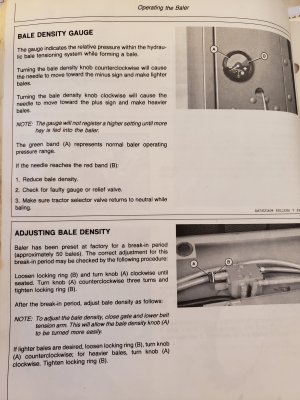Weird thing is that my gauge is 2/3 full, guessing it's failed but I'll find out soon. I've set my rake wider and I'll measure and tune on Friday to get the windrows the right dimension. Going to need to rake twice I think, get all the grass off the ground and then profile. The bales I get well balanced are a little squishy, get fat on the bottom so I think there's room to increase density. Also, I may start doing 4ft bales instead of 5 to counter the potential impact on belts etc.
Thanks for the advice, I've learnt a ton super in just a few posts.
@callmefence, thanks for kicking this one off sir.

